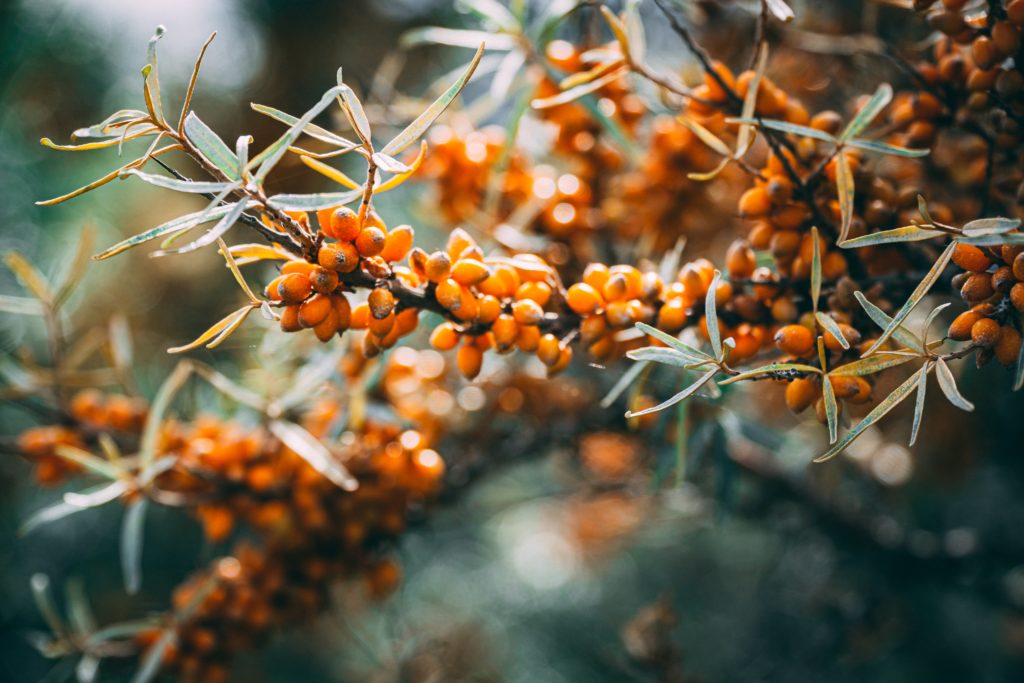You only have to look at the deep orange hue of Sea Buckthorn to know it must offer some amazing healing properties. But not just the berries, there is a huge range of bioactive chemicals in its leaves, roots and seeds.
Traditional medicine has promoted the use of Sea Buckthorn for centuries. Documents detail Alexander the Great and his troops consumption of the berries in their diet. He noted that they promoted strength and vitality. The horses would nibble the berries and appeared to recover quickly from illnesses. They were noted for their shining manes.
Referred to as the holy fruit of the Himalayas you don’t have to travel so far to find it.

Native to the sand dunes along the east coast of England my father and I recently found it growing by the Thames in London. Its bright orange hue lighting up the pathway.
Active components
Rich in vitamins A, C, K, and E, the berries also contain healthy amounts of magnesium, potassium, zinc, copper and iron.
The bioactive substances in various parts of sea buckthorn have a range of properties, including antioxidant, anti-inflammatory, and anti-proliferative activities.
Benefits of Sea Buckthorn
Its positive effect on bodily dryness is due to the unique omega 7 profile of Sea Buckthorn.
In a study of 100 participants consuming Sea Buckthorn oil had positive effects on tear film osmolarity and symptoms of dry eye. Patients with Sjögren’s syndrome experienced alleviation of eye dryness.
Studies have have also shown positive outcomes with patients suffering from vaginal dryness. Containing the rare Omega 7 Sea Buckthorn is said to stimulate the regeneration of vaginal mucosa, which directly increases vaginal secretion and hydrates the vaginal linings.
Patients suffering from a dry mouth noted improvements after consuming the oil for 4 weeks. Mucosa quality in the mouth was better and patients had relief of symptoms.

Share:
5 Ways to Regain Sense of Smell After Covid
Watermelon Hydrating Drink